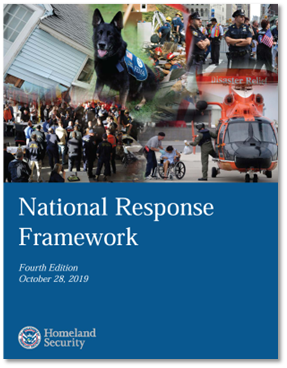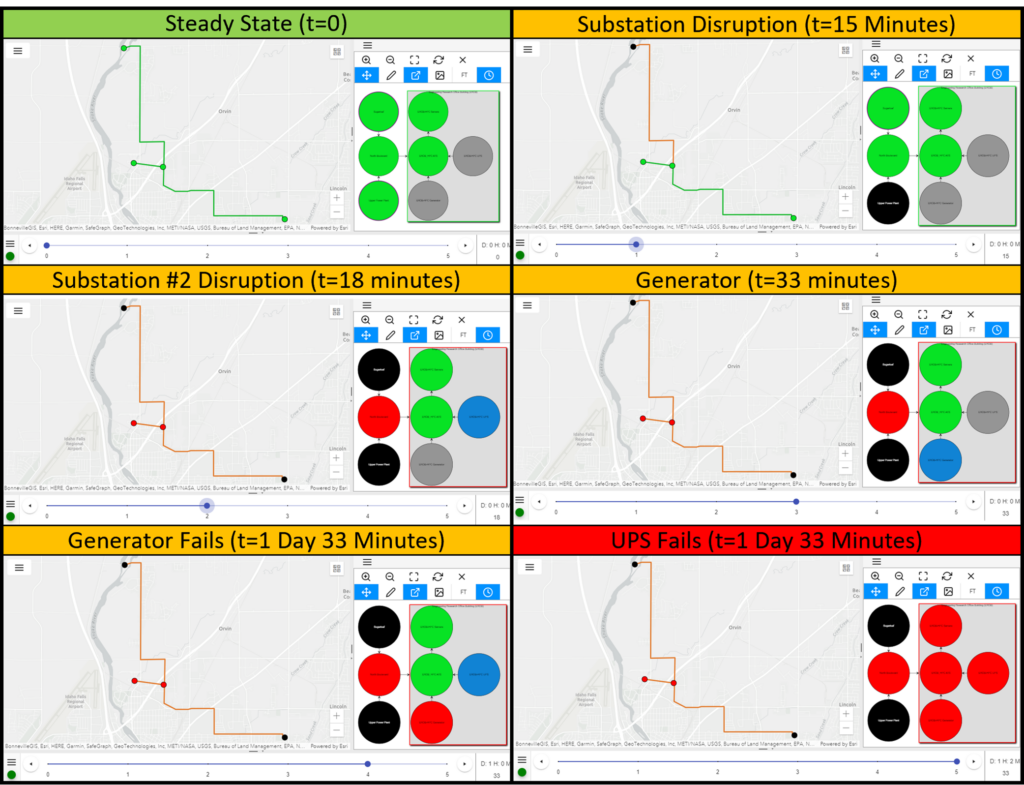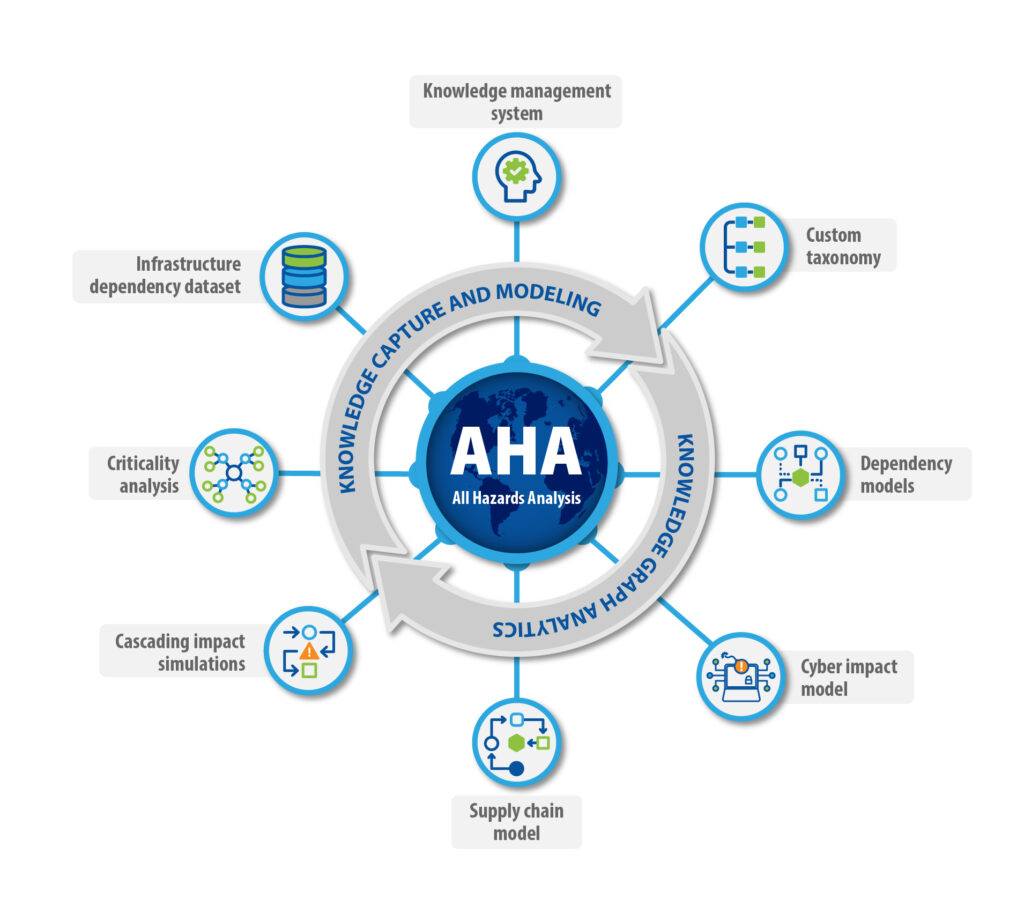All Hazards Analysis
A Dynamic Approach To Critical Infrastructure Threats
All Hazards Analysis (AHA) is a dynamic framework for dependency analysis, empowering the discovery of critical infrastructure insights and facilitating decision-making. Developed by Idaho National Laboratory, AHA identifies dependencies and associated risks, offering decision-makers and emergency managers a holistic perspective on interconnected infrastructure systems.
Employing an optimized framework, AHA efficiently collects, stores, analyzes and visualizes critical infrastructure data. Its function-based approach organizes information into nodes (representing infrastructure) and links (depicting dependency relationships). Continuously learning, AHA integrates general and facility dependency profiles with new data and evolving network structures, enabling more comprehensive sector analysis and consequence assessment compared to other infrastructure modeling systems.

National Response Framework
AHA finds application within the National Response Framework, encompassing prevention, protection, mitigation, response and recovery efforts. Its versatility spans from assessing potential consequences to ensuring the continuity of operations.
Applications and Users
Application uses include the National Response Framework (Prevention, Protection, Mitigation, Response and Recovery). AHA has a broad range of uses that extend from analyzing potential consequences to ensuring continuity of operations.
AHA users include:
- State, local and federal government
- National laboratories
- Industry and private sector
- Colleges and universities
AHA Distinguishing Assets
AHA is a unique instrument, equipping users with a fundamental dataset gathered from both structured data and open-source unstructured data. The instrument is enhanced with spatial analysis techniques. Subsequently, users can import and oversee their data, tailored to their expertise and areas of interest. Access to the entered data is restricted to authorized users.
This tool offers both geospatial and graphical visualization features to navigate the complexities of the problem space. Data presentation is facilitated through an interconnected map view and dependency graphs. AHA possesses a user-friendly interface yet remains adaptable to cater to individual user requirements.
Function Failure Logic/Time Dependent Function Failure Logic
The AHA simulator demonstrates the effects of disruptions to facilities. The simulator can be configured to run with function failure logic, using reachability, or time dependent function failure logic, using discrete events, calculating effects and determining network resolution.
Essential Function Analysis Capability
The Essential Function Analysis Capability extends the AHA framework into the realm of mission continuity planning. The U.S. Federal Emergency Management Agency uses this extension, which includes modules that break down the organizational and functional requirements of nonphysical systems and those of physical continuity facilities. The AHA framework’s simulation features are expanded to illustrate the effects on an organization’s crucial functions and to offer the capability to monitor the progression of devolution activities for each function.


Supply Chain Model
The AHA framework also allows users to simulate the overarching movement of goods within its supply chain model. In this model, data regarding transformation processes and global supply points can be integrated to pinpoint crucial disruption points in complex, multitiered supply chains. This overarching data can be matched with detailed asset-level information from AHA, confirming production capacities for vital commodities critical to the world’s infrastructure.
